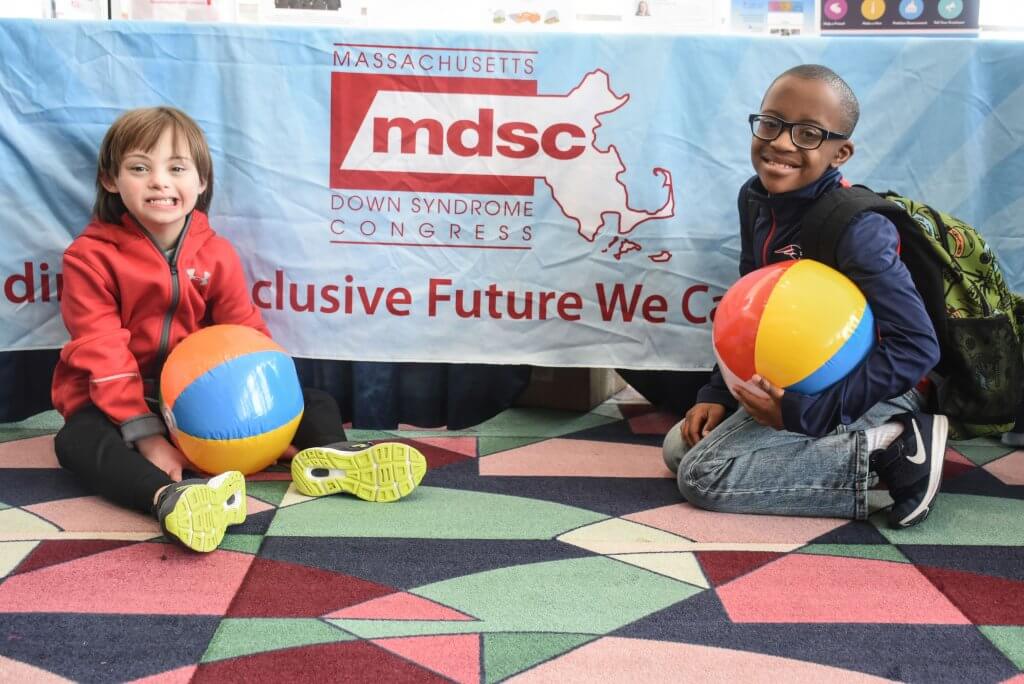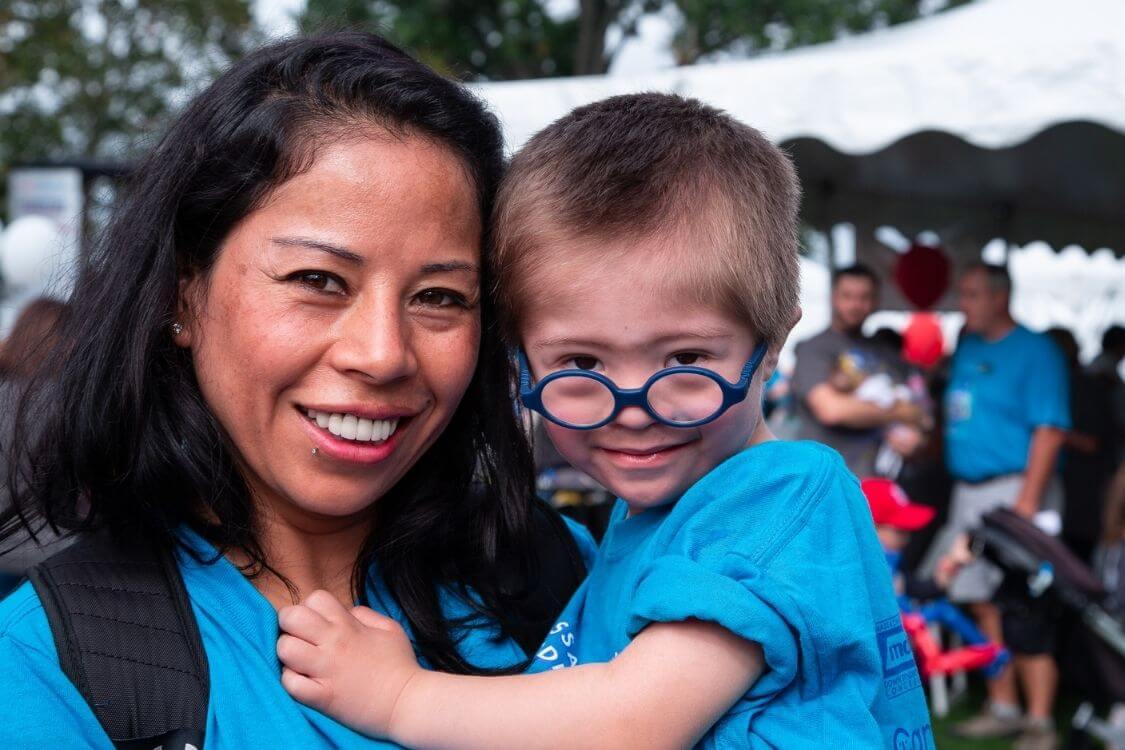We believe that informed, involved parents are the best educational advocates for their children with Down syndrome. Although educational advocacy is an incredibly important job for parents, we also recognize that, for some, it’s a very challenging one. To that end, the MDSC offers parents and educators who work with students with Down syndrome accurate resources and information necessary for developing strong educational programs that will meet the individual needs of each student.
Parents are an important part of your child’s educational team for many reasons:
- Parents have knowledge of their child in out-of-school settings that can aid assessments, target setting, planning curriculum activities and managing behavior
- Parents can support curriculum targets with out-of-school activities
- Parents can suggest and provide materials and topics to support learning in school
- Parents can help pupils to generalize the skills learned in school to everyday life
- Parents are often very knowledgeable about the development and education of children with Down syndrome – they can be an expert resource
- Parents value the support that they receive from education professionals
In order for your child to receive the high quality education and supports he or she needs and deserves, it is important to build and maintain a strong, positive relationship with everyone who plays a key role in educating your child. We believe children benefit most from their education when parents and educators work together as partners, and each perspective is heard and considered.

Special Education Law
For students with Down syndrome to get the best public education possible, it is crucial that administrators, educators and parents have a solid understanding of special education legislation and its underpinnings, both on the federal and state level.
States are entitled to provide rights in addition to those accorded under federal law. The amendments to Massachusetts’ special education law in 2000 brought Massachusetts generally in alignment with the federal standards, which are summarized below..
Individualized Education Program (IEP)
As the “road map” for a public school education, an Individualized Education Program (IEP) is a key component for a successful educational experience for a child with Down syndrome. Without a thoughtful and well-managed IEP, children with Down syndrome may not be able to actively and meaningfully participate in the general education curriculum.
As mandated by the federal Individuals with Disabilities Education Act (IDEA), an IEP is required for every public school student receiving special education services, and it must be truly individualized to each child’s needs.
Who writes it?
By law, the creation and oversight of an IEP must be collaborative with a “team” not only developing each IEP but periodically reviewing it as well. Crafting an IEP is an opportunity for parents, special education teachers, service providers, other teachers and supports, and students (when appropriate) to sit together and work toward a common goal; improving the educational experience and outcomes of a child with disabilities.
What does it do?
The IEP functions as a legal contract between a school district and parents. Each IEP specifies the appropriate placement, accommodations, goals and services for the student being served. In addition, each IEP must explicitly state the following:
- Student’s current level of education
- “Vision” that sets his/her broad educational objectives
- Detailed description of special education services and other services provided by school
- Measurable goals in academic and other areas, such as social and emotional
- Statement relating to student’s participation in statewide assessments such as MCAS
- Service delivery grid detailing services the student will receive and in what settings
- Transportation plan/agreement
- Transition services plan/agreement (starting at age 14)
- Plan for extended day or year services when necessary
- Placement decision

Inclusion
Although significant strides have been made in the past few decades in areas of health, education, and public perception of people with Down syndrome, many misperceptions still exist. For some, this has a direct impact upon the educational programming that some school districts propose for students, based upon their diagnosis, rather than their individual profile of specific strengths and weaknesses. Even though people with Down syndrome are as multifaceted as everyone else, these stereotypes or preconceived notions can limit opportunities for people with Down syndrome to live up to their full potential.
New advances in Down syndrome research have uncovered a great deal about how individuals with Down syndrome process information and learn. We know that students with Down syndrome have cognitive strengths that can support them in a general education classroom setting. Few people are aware that most children with Down syndrome are strong visual learners, and, with targeted instruction, have the capacity to learn to read whole words as young as 3 years old. This early acquisition of printed text supports language and vocabulary development, which is an area of vulnerability for students with this cognitive profile.
Extensive research has shown that students with Down syndrome are globally more successful as adults when they are included in an educational setting with their typical peers as children, as opposed to those who were educated in a setting with students with similar academic, functional, linguistic and behavioral challenges. In addition, there are numerous documented social and academic benefits for children without disabilities who are taught in classrooms designed to meet the needs of diverse learners.
As a state-wide advocacy organization, we are working towards supporting communities to develop a greater understanding about the potential of individuals with Down syndrome and other cognitive disabilities. A wonderful place to start this education is within the schools. It is important to develop classroom communities where we view every child as a valuable, contributing member. In addition to supporting all students, we are also fostering a community of future leaders who will view individuals with disabilities as positive, contributing members of society.
For more information on the benefits of educational inclusion, visit our Center on Inclusive Education.
MDSC Programs for You
As many parents’ primary concern during the school age years is their child’s education, we have a breadth of work related to supporting families and educators in this arena, including our Educators Forum which takes place each fall.
We know, too, that there are many other facets of life to consider in supporting the total wellbeing of your growing child and are proud to offer the programs and activities below. We hope you’ll get involved!
- Annual Conference – Each March, workshops are provided on a vast array of topics including behavior, communication, friendships, medical updates, recreation and more.
- MDSC 4-7 Play Group – quarterly activities for families whose child with Down syndrome is age 4-7 and siblings; Email us or call 781-221-0024 x206
- MDSC 8-12 Play Group – quarterly activities for families whose child with Down syndrome is age 8-12; Email us or call 781-221-0024 x206





